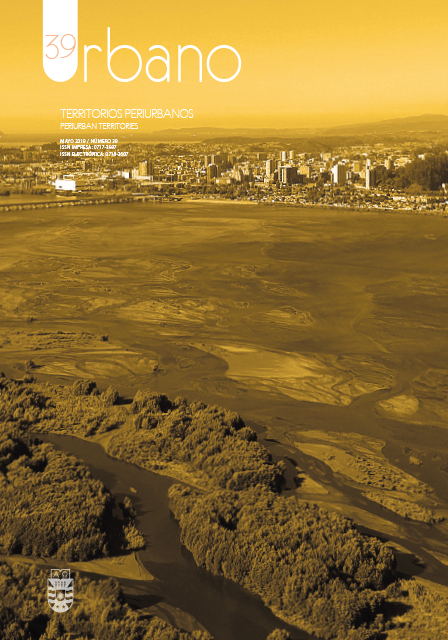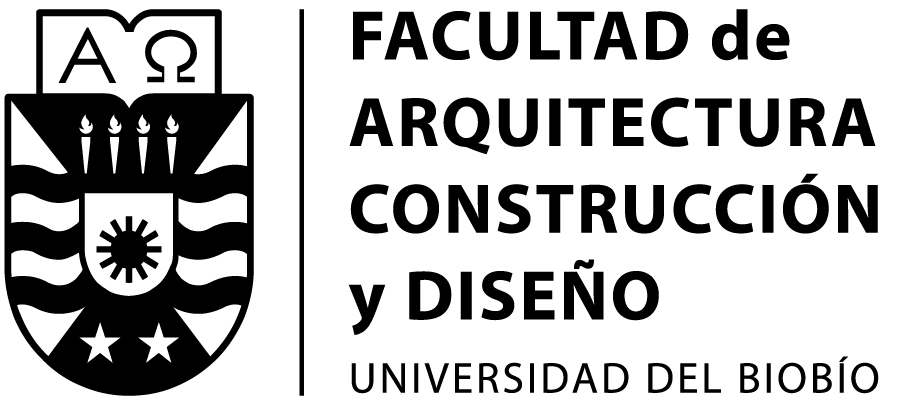La “cuenca de vida” como nueva escala de producción de territorios urbano-rurales sostenibles. Reflexiones desde los Andes ecuatorianos /The “Lifeshed” as a New Scale of Production of Sustainable Urban-Rural Territories. Insights from the Ecuadorian Andes
DOI:
https://doi.org/10.22320/07183607.2019.22.39.01Palabras clave:
Ecuador, relaciones campo-ciudad, periurbano rural y agrícola, cuenca de vidaResumen
Desde hace varias décadas las áreas periurbanas en los Andes ecuatorianos han conocido importantes cambios debidos a la densificación del hábitat o al desarrollo de la agricultura capitalista. No obstante, mientras que esta región debe enfrentar el desafío del abastecimiento alimentario de su población urbana y el de la protección de los recursos naturales frente a los cambios globales, parece clave proporcionar una reflexión acerca de las áreas periurbanas en la sierra ecuatoriana con miras a evaluar en qué medida podrían volverse zonas útiles para la provisión de servicios alimentarios y ambientales. Así, este artículo recopila los resultados de investigaciones llevadas a cabo en las ciudades de Riobamba y de Cuenca para analizar las dinámicas territoriales en 4 áreas periurbanas con el fin de proporcionar argumentos encaminados a repensar el marco espacial de las políticas públicas de desarrollo en los Andes ecuatorianos, de manera de optimizar la articulación campo-ciudad. Desde un punto de vista teórico, esto conduce a abordar y definir la noción de “cuenca de vida” para pensar en la emergencia de territorios urbano-rurales sostenibles.
Descargas
Citas
AUBRY, Christine. Les fonctions alimentaires de l’agriculture urbaine au Nord et au Sud – Diversité et convergences. Bulletin de l’association de géographes français [en línea], 2013, vol. 90, n° 3. DOI: 10.4000/bagf.2218
ÁVILA SÁNCHEZ, Héctor. Periurbanización y espacios rurales en la periferia de las ciudades. Estudios Agrarios, 2009, n° 41, pp. 93-123.
BARRAGAN OCHOA, Fernando. Les petits producteurs, les villes et le lait : Défis du ravitaillement alimentaire dans les Andes du nord de l’Équateur. Tesis doctoral inédita. Universidad Paris 1 Panthéon-Sorbonne, 2017.
BERGER, Martine y CHALÉARD Jean-Louis (dir.). Villes et campagnes en relations. Regards croisés Nords-Suds. París: Karthala, 2017.
BREILH, Jaime; PAGLICCIA, Nino y YASSI Annalee. Chronic pesticide poisoning from persistent low-dose exposures in Ecuadorean floriculture workers: toward validating a low-cost test battery. International Journal of Occupational and Environmental Health [en línea], 2012, vol. 18, n° 1, pp. 7-21. DOI 10.1179/1077352512Z.0000000002
BOURDIEU, Pierre. L’espace des points de vue. En : BOURDIEU, Pierre (dir.). La misère du monde. París: Seuil, 1993, pp. 13-17.
CHALÉARD, Jean-Louis y DUBRESSON, Alain (eds.). Villes et campagnes dans les pays du Sud. Géographie des relations. Paris: Karthala, 1999.
DELER, Jean-Paul. Ecuador: del espacio al Estado nacional. 1a ed. Quito: UASB/IFEA/CEN, 2007.
DURÁN, Gustavo; MARTÍ Marc y MÉRIDA Juan. Crecimiento, segregación y mecanismos de desplazamiento en el periurbano de Quito. Íconos [en línea], 2016, n° 56, pp. 123-146. DOI: https://doi.org/10.17141/iconos.56.2016.2150
GETZ, Athur. “Urban foodsheds”. The Permaculture Activist, 1991, n° 24, pp. 26-27.
GIUNTA, Isabella. Food sovereignty in Ecuador: peasant struggles and the challenge of institutionalization. The Journal of Peasant Studies [en línea], 2014, vol. 41, n° 6, pp. 1201-1224. DOI: https://doi.org/10.1080/03066150.2014.938057
GIRARD, Margaux. Les Andes péruviennes à l'heure des agricultures durables: Réflexions sur la transition agroécologique et ses verrouillages socio-techniques à Cusco. Tesis doctoral inédita. Universidad de Orléans, 2017.
HARVEY, David. Géographie de la domination. París: Les Prairies Ordinaires, 2001.
HESPANHOL, Rosângela. Programa de Aquisição de Alimentos: limites e potencialidades de políticas de segurança alimentar para a agricultura familiar. Sociedade & Natureza [en línea], 2013, n° 254, pp. 69-483. DOI: http://dx.doi.org/10.1590/S1982-45132013000300003
KLOPPENBURG, Jack; HENDRICKSON John y STEVENSON George. Coming in to the foodshed. Agriculture and Human Values [en línea], 1996, vol. 13, n° 3, pp. 33-42. DOI : 10.1007/BF01538225
LAMINE, Claire. “Changer de système”: une analyse des transitions vers l’agriculture biologique à l’échelle des systèmes agri-alimentaires territoriaux. Terreains & travaux, 2012, n° 20, pp. 139-156.
LENTZ, Carola. Estrategias de reproducción y migración temporaria. Indígenas de Cajabamba/Chimborazo. Ecuador Debate. 1985, n° 8, pp. 194-215.
MARTÍNEZ, Luciano. Asalariados rurales en territorios del agronegocio: flores y brócoli en Cotopaxi. 1ª ed. Quito: FLACSO-Ecuador, 2015.
MARTÍNEZ, Luciano. Agribusiness, Peasant Agriculture and Labour Markets: Ecuador in Comparative Perspective. Journal of Agrarian Chang [en línea], 2017, vol. 17, n° 4, pp. 680-693. DOI: https://doi.org/10.1111/joac.12188
MARTINEZ GODOY, Diego. Agriculture contractuelle et déterritorialisation dans les Andes Equatoriennes. Le cas d'une communauté paysanne au pied du volcan Cayambe. Tesis doctoral inédita. Universidad de Paris Saclay/AgroParistech, 2016.
McGEE, Terry. The emergence of desakota regions in Asia: expanding a hypothesis. En: GINSBURG, Norton; KOPPEL, Bruce y McGEE, Terry, (eds.), The extended metropolis: settlement transition in Asia. Honolulu: University of Hawaii Press, 1991, pp. 3-25.
MEJÍA SALAZAR, Montserrath y PÁLIZ, César Fernando. El territorio periurbano de la ciudad de Quito: expansión urbana, cambio de la morfología y valor del suelo. Caso de estudio “valle de Los Chillos”, Distrito Metropolitano de Quito, Ecuador. Eídos [en línea], 2018, n° 11, pp. 1-26. DOI: https://doi.org/10.29019/eidos.v0i11.422
MOUSTIER, Paule. Short urban food chains in developing countries: signs of the past or of the future? Natures Sciences Sociétés [en línea], 2017, vol. 25, n°1, pp. 7-20. DOI : https://doi.org/10.1051/nss/2017018
O’CONNOR, James. Capitalism, Nature, Socialism: A Theoretical Introduction. Capitalism, Nature, Socialism, 1988, vol. 1, n°1, 11-38.
OSTROM, Elinor. Governing the Commons: The Evolution of Institutions for Collective Action. Cambridge: Cambridge University Press, 1990.
PRESTON, David. Emigración rural y desarrollo agrícola en la sierra ecuatoriana (Estudio de caso Guamote, Provincia de Chimborazo-1976). En: PACHANO, Simón (ed.), Población, Migración y Empleo en el Ecuador. Quito: ILDIS, 1988, pp. 73-102.
RAIMBERT, Céline y REBAÏ, Nasser. Collectifs et développement durable des territoires ruraux en Amérique Latine. EchoGéo [en línea], 2017, n° 42, pp. 1-25. DOI : 10.4000/echogeo.15131
REBAÏ, Nasser. A chacun son chemin. Une analyse de la redéfinition des stratégies paysannes et des dynamiques territoriales dans le contexte migratoire des Andes équatoriennes. Tesis doctoral inédita. Université Paris 1 Panthéon-Sorbonne, 2012.
REBAÏ, Nasser. Emigration paysanne et vulnérabilité des territoires ruraux dans les Andes équatoriennes. Une analyse en image depuis la périphérie de Cuenca. EchoGéo [en línea], 2015, n° 3, pp. 2-13. DOI: 10.4000/echogeo.14420
REBAÏ, Nasser. Fortalecer los colectivos campesinos en los Andes ecuatorianos. Análisis desde las provincias de Chimborazo y Cotopaxi. Eutopía [en línea], 2018, n° 13, pp. 117-133. DOI: https://doi.org/10.17141/eutopia.13.2018.3299
REBAÏ, Nasser y ALVARADO, Julio. Trajectories of Vulnerability of Rural Territories in the Ecuadorian Andes: A Comparative Analysis. Journal of Alpine Research [en línea], 2018, vol. 106, n° 3, pp. 1-20. DOI: 10.4000/rga.4969
RIVERA-MUÑOZ, Mónica. Abundance of Interplays Deliveredby Scattered Patterns of Occupation.San Joaquin in Cuenca, a Case of Studyin the Southern Highlands of Ecuador. En: VIGANÒ, Paola; CAVALIERI, Chiara y BARCELLONI CORTE, Martina (ed.), The Horizontal Metropolis Between Urbanismand Urbanization. Cham: Springer International Publishing, 2018, pp. 191-204.
TALLET, Bernard. Les relations villes/campagnes : nouveaux contextes, nouvelles configurations? En: CAMBREZY, Luc y PETIT, Véronique (dir.), Population, mondialisation et développement. Quelles dynamiques? París: La documentation Française, 2012, pp. 129-145.
TORRE, André y BEURET, Jean-Eudes. Proximités territoriales. París: Económica, 2012.
YACAMAN OCHOA, Carolina y ZAZO MORATALLA, Ana (coord.). El Parque Agrario. Una figura de transición hacia nuevos modelos de gobernanza territorial y alimentaria. Madrid: Heliconia, 2015.
ZASADA, Ingo. Multifunctional peri-urban agriculture. A review of societal demands and the provision of goods and services by farming. Land use policy [en línea], 2011, vol. 28, n° 4, pp. 639-648. DOI: https://doi.org/10.1016/j.landusepol.2011.01.008
Descargas
Publicado
Cómo citar
Número
Sección
Licencia
El contenido de los artículos y reseñas que se publican en cada número de Urbano, es responsabilidad exclusiva de los autores y no representan necesariamente el pensamiento ni comprometen la opinión de la Universidad del Bío-Bío.
Las/os autoras/es conservarán sus derechos de autor, sin embargo, garantizarán a la revista el derecho de primera publicación y difusión de su obra. La publicación del artículo en Urbano estará sujeta a la Licencia de Reconocimiento de Creative Commons CC BY-SA que permite a otros compartir-copiar, transformar o crear nuevo material a partir de esta obra para cualquier propósito, incluso comercialmente, siempre y cuando se reconozcan la autoría y la primera publicación en esta revista, y sus nuevas creaciones estén bajo una licencia con los mismos términos.![]()























